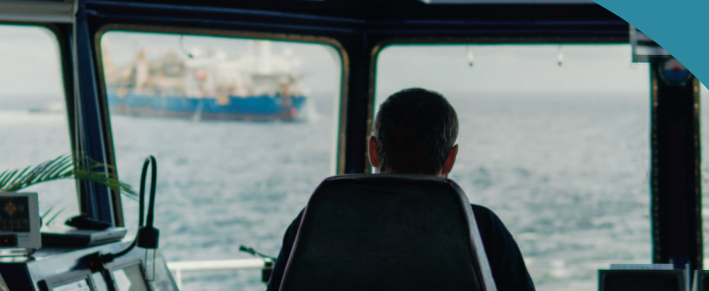In its latest published Casebook containing safety lessons learned from maritime incidents, the Swedish Club focuses on a collision incident resulted by restricted visibility.
The incident
Vessel A, a 1000 TEU container vessel, was approaching the pilot station at 17 knots. The vessel was in manual steering mode and was on a course of 280°. That afternoon visibility was restricted to approximately 0.1 NM due to fog.
[smlsubform prepend=”GET THE SAFETY4SEA IN YOUR INBOX!” showname=false emailtxt=”” emailholder=”Enter your email address” showsubmit=true submittxt=”Submit” jsthanks=false thankyou=”Thank you for subscribing to our mailing list”]
The Bosun was on deck preparing the pilot ladder after which he would go to the forecastle to act as a lookout.
The bridge
The Master, the Second Officer and the AB were on the bridge. The Master had the conn, the Second Officer was monitoring, and the AB was on the wheel.
Two ARPA radars were used alternatively on ranges between 6 NM, 3 NM and 1.5 NM. Both the Master and OOW were monitoring the vessel’s progress on the radars.
Monitoring
The Master saw a target on the radar and acquired it on the ARPA as vessel B. The target was 10° on the port bow, 4 NM away with a CPA of 0.2 NM. Vessel A was overtaking vessel B.
It could be seen that if vessel A maintained this course, it could hit vessel B on the starboard side. Vessel B was also on a course of about 280° and making a speed of 6 knots. The Master started the fog signal.
C -15 minutes: Vessel B was on course of 293° and the CPA was 0.14 NM. Vessel A was maintaining its course and speed.
C -10 minutes: Vessel B’s course was 285°, CPA 0.04 NM and distant 1.4 NM.
C -5 minutes: Vessel B’s course was 289°, CPA 0.03 NM and distant 0.65 NM.
C -2 minutes: Vessel B’s course was 304° and CPA 0.01 NM and distant 0.3 NM. Vessel B was still on the port bow of vessel A. At this point the Master on vessel A realised that vessel B was very close and ordered hard to starboard and stop engines.
Collision: It was too late to avoid the collision and vessel A struck vessel B on its starboard side about midships. The Master saw that vessel B was a small tanker. Shortly afterwards vessel B began to list heavily to starboard and the crew were forced to deploy the life rafts and abandon ship. They were all rescued by vessel A.
Lessons learned
- The bridge team on vessel A acquired vessel B on the ARPA at about C -15 minutes. The CPA was 0.14 NM. With such a small CPA this should be considered a close quarter situation. At this point the bridge team had time to make an alteration to ensure the collision was avoided but no action was taken on vessel A.
- When sailing in restricted visibility all vessels have a responsibility to stay clear of each other. All vessels also have a responsibility to proceed at a safe speed which ensures that they can stop quickly. Maintaining full speed in restricted visibility under these navigational circumstances could be considered proceeding at an unsafe speed. Vessel A was approaching a pilot station in restricted visibility which meant there was also an increased risk of encountering a greater concentration of different types of vessels.
- In restricted visibility both vessels have an obligation to stay clear of each other. However, we do not know why vessel B altered to starboard. It is possible vessel B altered course in accordance with their passage plan. Vessel A was overtaking vessel B which required vessel A to stay well clear of vessel B.
- It is important that the officers understand the rules and increased risks when sailing in restricted visibility. It is also important to understand the limitations of the navigation equipment. It appears that the bridge team on vessel A considered a CPA of 0.14 NM to be an acceptable margin. To ensure situational awareness is maintained, the bridge team should discuss all plotted targets, what risks they pose and take appropriate action.






























































